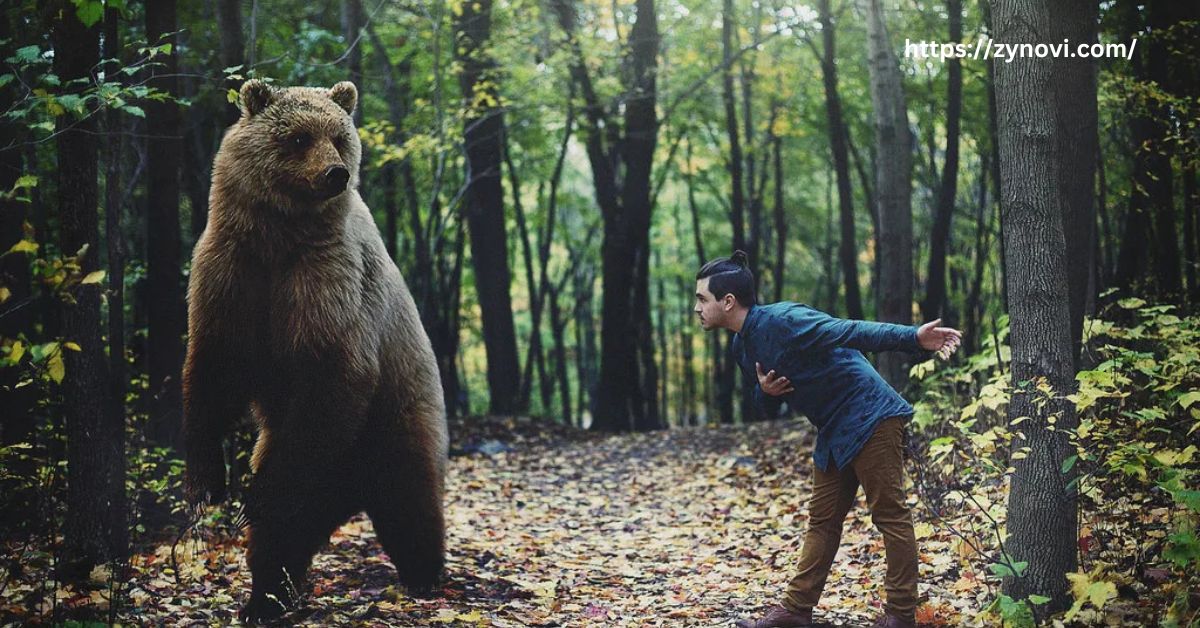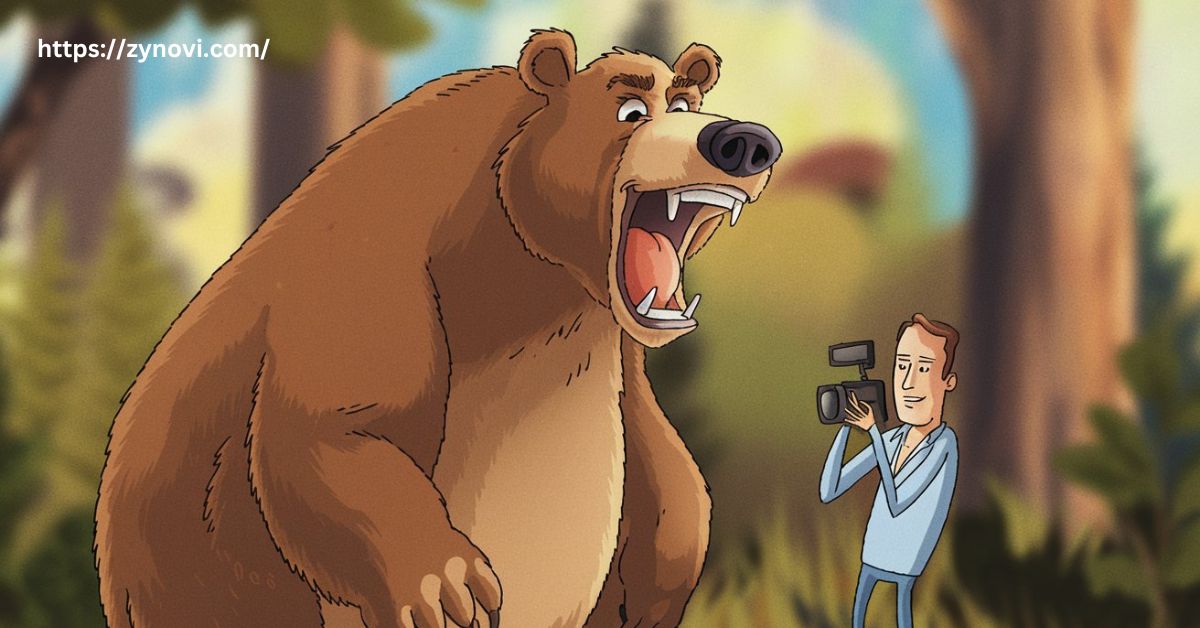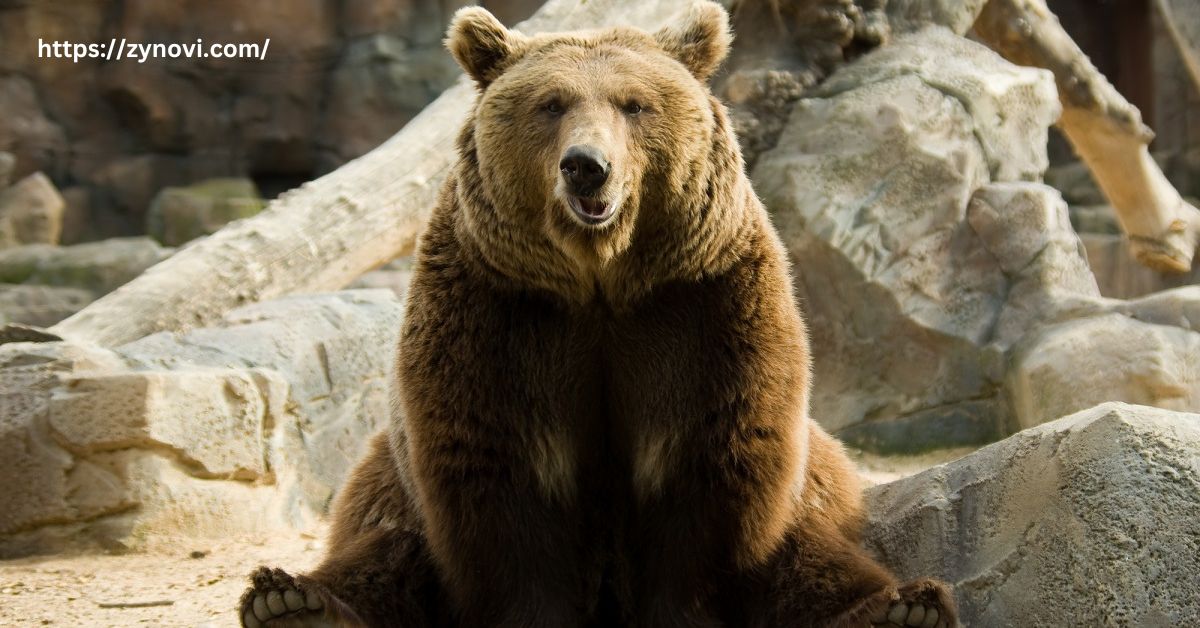Do Brown Bears Attack Humans? Yes, They can rarely attack, but such incidents occur under specific conditions, like threatened or startled.
It’s a question that may pop into your head while exploring the wild. While these magnificent creatures are mostly peaceful, the thought of an encounter can stir up some serious concern. You’re not alone many hikers and campers wonder about the risks when venturing into bear territory.
But don’t worry! In this article, we’ll break down everything you need to know to stay safe. By understanding bear behavior and following some simple safety tips, you can enjoy your adventure without fear. Ready to dive in and learn how to reduce the risks? Keep reading!
Understanding Brown Bears
Who Are Black Bears?
Black bears, scientifically known as Ursus americanus, are the most common bear species in North America.
They are found in various regions, including Alaska, Western Canada, Russia, Scandinavia, and parts of Eastern Europe, such as the Carpathian Mountains in Romania and Slovakia.
Black bears are known for their adaptability to different environments and their varied diet. Despite their name, black bears can also have brown, cinnamon, or even white fur, depending on their region.
Habitat and Distribution
Brown bears thrive in diverse environments, including dense forests, alpine meadows, and tundras. They are particularly common in protected areas such as Denali National Park, Katmai National Park, and Yellowstone National Park.
These regions offer an abundance of natural resources, including food sources like fish, berries, and small mammals. The availability of food and minimal human disturbance play crucial roles in determining their habitat preferences.
Brown bears adapt well to varying climates, from the cold Arctic regions to temperate forests.
Physical Characteristics
| Feature | Description |
|---|---|
| Muscular Shoulders | Brown bears have strong, muscular shoulders that aid in digging and foraging. |
| Thick Fur | Their thick fur provides insulation and protection in harsh environments. |
| Size Range | Brown bears can weigh between 300 to 1,500 pounds, depending on age and diet. |
| Powerful Claws | Their sharp claws are essential for hunting, climbing, and digging for food. |
| Strength | Known for their immense strength, they can overpower large prey and defend against threats. |
These physical attributes make brown bears some of the most formidable creatures in the wild, capable of adapting to and thriving in diverse habitats.
Diet and Behavior
Diet: As omnivores, brown bears have a varied diet that includes grasses, roots, berries, fish, small mammals, and carrion. This wide-ranging diet allows them to adapt to different environments and seasonal food availability.
Behaviour: Their foraging behavior often brings them close to human settlements, especially when natural food sources are scarce, leading to potential conflicts.
Brown bears are typically nocturnal, most active at dawn and dusk, making it crucial for hikers and campers to stay vigilant during these times to avoid unwanted encounters.
Subspecies of Brown Bears
Notable subspecies include the grizzly bear (found in North America), the Kodiak bear (native to Alaska’s Kodiak Archipelago), and the Eurasian brown bear.
Each subspecies has adapted to its unique environment, but all share common traits that contribute to their survival.
Brown Bears With Human Interaction

Historical Context (Do Brown Bears Attack Humans?)
Historically, human-bear interactions have ranged from coexistence to conflict. Indigenous peoples often revered brown bears, respecting them as powerful symbols and vital parts of the ecosystem, leading to a more harmonious coexistence.
In contrast, early settlers, who saw brown bears as threats to livestock and human safety, engaged in widespread hunting to protect their communities.
This historical conflict significantly reduced bear populations in many areas, altering the dynamics between humans and these majestic creatures over time.
Modern Encounters
Today, wilderness areas have become increasingly popular for recreational activities such as hiking, camping, and fishing, leading to a rise in human-bear encounters.
These encounters often occur when humans unknowingly enter bear territory or when bears, driven by the search for food, wander into human settlements.
With the expansion of human development into natural habitats, the likelihood of such encounters has grown, emphasizing the need for greater awareness and preventive measures to ensure the safety of both humans and bears.
Cultural Perspectives
Different cultures have diverse views on brown bears, influencing their relationships with these animals.
- In many Indigenous cultures, brown bears are revered as sacred creatures, symbolizing strength and wisdom, leading to their protection and respect.
- Conversely, in regions where brown bears are perceived as threats to livestock and human safety, they are often seen as dangerous pests.
- These cultural attitudes significantly shape conservation efforts and policies, determining how human-bear interactions are managed and how bears are protected or controlled.
Do Brown Bears Attack Humans?
Reasons for Attacks
Brown bear attacks on humans are relatively rare but can occur under specific circumstances:
- Defensive behavior: Brown bears may attack if they feel threatened, especially when they are protecting their cubs or their territory. In these situations, the bear acts out of instinct to defend its young or space.
- Surprise encounters: Often, attacks happen when humans and bears unexpectedly cross paths, especially if the bear is startled or feels cornered. This can lead to defensive aggression from the bear.
- Predatory behavior: Though extremely rare, there are instances where a bear might attack a human as potential prey, often in cases of extreme hunger or unusual circumstances. However, such attacks are far less common than defensive ones.
Do Brown Bears Attack Humans? Types of Attacks
Defensive Attacks: These are the most frequent type of bear attacks, occurring when the bear feels cornered or threatened. Often, these happen when a bear perceives humans as a danger to itself or its cubs, triggering an instinctual need to protect.
Predatory Attacks: Although uncommon, these attacks are much more dangerous. In these rare cases, the bear may view the human as a potential food source, often targeting individuals who are isolated or in vulnerable situations, making the attack more deliberate and lethal.
Attack Frequency and Risk Factors
Brown bear attacks are statistically rare, but certain risk factors can increase the likelihood of an encounter. Hiking alone or moving quietly through bear territory, where you might startle a bear, raises the chances of an attack.
Not properly storing food at campsites is another major risk, as the scent can attract bears.
Understanding these risks and taking precautions, such as hiking in groups, making noise to alert bears of your presence, and securely storing food, can significantly reduce the chances of an attack and ensure a safer outdoor experience.
How to Prevent a Brown Bear Attack

Best Practices for Hiking and Camping in Bear Country
- Make noise while hiking: To avoid surprising bears, make noise by talking, singing, or using bear bells. This helps alert bears of your presence, allowing them to move away before an encounter occurs.
- Travel in groups: Bears are less likely to approach groups of people due to the presence of multiple individuals. Traveling with others not only increases safety but also helps deter bear encounters.
- Store food properly: Always store food and scented items in bear-proof containers or bear lockers. Keeping food secure prevents bears from being attracted to your campsite, reducing the risk of them seeking out your supplies.
- Avoid hiking during dawn and dusk: Bears are most active during these times, so it’s best to avoid hiking early in the morning or at night. Hiking during daylight hours reduces the chances of encountering a bear while it’s foraging or hunting.
Understanding Bear Behavior Signals
Understanding bear behavior is essential for preventing conflicts and ensuring safety in bear country. Bears communicate through various signals that indicate their mood and intentions.
For instance, if a bear is huffing or clacking its teeth, it is signaling discomfort or agitation. A bluff charge, where the bear runs toward you but stops short, is another sign that the bear feels threatened and is warning you to back off.
Recognizing these signals can help you understand when a bear is stressed and allow you to take the necessary steps to avoid escalating the situation.
The Role of Bear Spray and Other Deterrents
Bear spray is widely regarded as one of the most effective deterrents for aggressive bears. Its proven ability to stop an attack by creating a cloud of irritant that affects a bear’s eyes and respiratory system makes it an essential tool for anyone hiking or camping in bear country.
While bear bells and air horns can help alert bears of your presence, they are not as reliable in preventing an attack. Bear spray, on the other hand, offers a non-lethal, highly effective means of defense should an encounter escalate.
How Dangerous Are Brown Bear Attacks?

Injury Severity and Common Outcomes
Brown bear attacks can lead to severe injuries, given their immense strength and sharp claws.
Common injuries include deep lacerations, broken bones, and internal trauma, which can cause significant blood loss and long-term damage. In rare cases, bear attacks can result in fatalities.
However, survival rates improve considerably with prompt and proper medical attention, as swift treatment can prevent infection and complications, reducing the risk of long-term disability or death.
Medical Response and Survival Rates
Immediate medical care is vital for anyone injured in a bear attack. Studies show that early intervention, such as stopping bleeding, treating wounds, and addressing shock, significantly enhances the chances of survival.
Timely medical response can also reduce the severity of long-term consequences, helping victims recover faster and avoid permanent impairments.
The faster the treatment, the better the outcome, underlining the importance of having emergency plans in bear-prone areas.
Are Brown Bears More Dangerous Than Other Bears?
| Aspect | Brown Bears | Black Bears | Brown Bears vs. Polar Bears |
|---|---|---|---|
| Size | Larger (300-1,500 lbs.) | Smaller (100-600 lbs.) | Polar bears are larger and heavier than brown bears. |
| Aggression | More aggressive, may stand ground. | Generally passive, likely to flee. | Polar bears are more dangerous due to predatory nature. |
| Behavior in Encounters | May stand ground if threatened. | More likely to flee. | Brown bears are more common due to wider distribution. |
| Habitat | Forests, mountains, coastal areas. | Forests, swamps, mountains. | Polar bears live in the Arctic, while brown bears are more widespread. |
Final Verdict
While brown bear attacks on humans do occur, they are relatively rare and typically happen under specific circumstances, such as when a bear feels threatened or startled. Understanding bear behavior and recognizing warning signs can help prevent dangerous encounters.
By following safety guidelines, traveling in groups, and using deterrents like bear spray, hikers and campers can significantly reduce the risks and ensure a safer outdoor experience in bear country. Proper precautions are key to minimizing the chance of an attack.
FAQs
How likely is a brown bear to attack you?
Brown bear attacks are rare, and most encounters are non-threatening if you follow safety guidelines.
Which bears don’t attack humans?
Black bears are generally more likely to flee than attack, while attacks are rare for most bear species.
What to do if you see a brown bear?
Stay calm, avoid eye contact, and slowly back away without turning your back on the bear.
Will a brown bear attack you if you lay down?
Laying down may trigger a defensive response from the bear, so it’s best to stand your ground and avoid acting submissive.
Conclusion: Do Brown Bears Attack Humans?
In conclusion, while brown bear attacks on humans are possible, they are relatively rare and usually happen under specific circumstances, such as when a bear feels threatened or surprised.
By understanding brown bear behavior and recognizing key warning signs, humans can greatly reduce the risk of an encounter escalating.
Implementing safety measures like making noise while hiking, traveling in groups, and properly storing food, along with carrying tools such as bear spray, can significantly lower the chances of an attack. With these precautions, humans can coexist safely with brown bears in their natural habitats.










